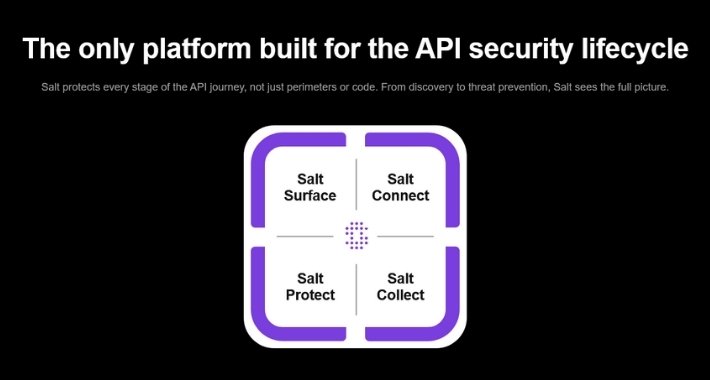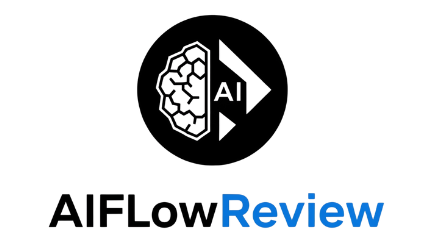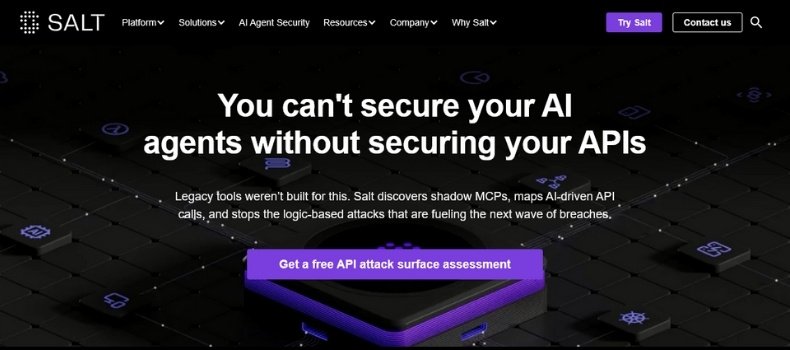APIs touch nearly every part of business today, and keeping them safe has never mattered more. Salt Security steps right into this space, focused on giving companies the tools to catch API attacks before they do any damage. As cloud services and AI tech grow fast, weak spots in API security can open the door to big risks.
I’ve spent real time with Salt Security, testing not just its claims but how it holds up in day-to-day work. If you’re building, scaling, or protecting any service that uses APIs, this review breaks down how well Salt Security delivers—warts and all. Expect honest feedback for anyone comparing tools or trying to protect valuable data, plus my own rating (I put it at a strong 8 out of 10 after hands-on use) to help you weigh its fit for your stack.
Analyzing Salt Security’s Key Features

Let’s get into the machinery that sets Salt Security apart from the usual crowd of API tools. If I had to sum up my time using Salt Security, it’s remarkably complete. Instead of just putting up a fence around your APIs, it monitors every single step—before, during, and after threats hit. What stands out is how it goes beyond checking configurations or following set rules; it watches how APIs behave in the wild. This keeps risks like shadow APIs, session abuse, and logic-based attacks from falling through the cracks.
Full API Discovery and Mapping
Salt Security managed to surface APIs I’d forgotten even existed. The discovery phase happens fast: in my tests, I saw a unified inventory of both internal and external APIs, including some random shadow endpoints left from old prototypes that were still live. With visibility this broad, I could pinpoint where data exposure might lurk.
- Finds rogue, undocumented, and deprecated APIs with no manual scanning.
- Maps the full API inventory so nothing is hidden from view.
- Gives instant context for compliance reviews or audits.
If you’re trying to get a handle on your attack surface, Salt Security makes it almost painless. It acts as a spotlight, showing the full fabric of connected systems.
Real-Time API Threat Detection
Standard tools review payloads and configs, but Salt Security digs deeper, watching for suspicious patterns as they happen. During my hands-on tests, the real-time intelligence flagged subtle issues a WAF would have missed—like unusual session behavior or logic tricks that sneak under the radar.
- Behavioral and business logic threats (like BOLA or function abuse) trigger real alerts, not just noise.
- Attack detection uses context, not only static signatures, which catches the evolving tactics behind modern breaches.
- Can spot when AI agents, not just end users, probe your APIs for weaknesses.
This feels like moving from a fire alarm that only warns about smoke to one that knows if someone’s actually trying to pick the lock.
Learn how these detection capabilities stack up among this year’s best AI security tools.
Automated Risk Posture and Compliance
Maintaining compliance can feel like whack-a-mole with fast-changing APIs. Salt Security streamlines this by continuously assessing posture and detecting drift. I found it especially handy for audits, since it keeps track of changes and flags when something slips out of alignment with policies like PCI DSS or GDPR.
- Dashboards explain why an API is flagged as risky.
- Detects misconfigurations in real-time before they lead to breaches or fines.
- Maps sensitive data flows, making it easier to document (and secure) personal info.
Having compliance managed automatically doesn’t just save time; it builds confidence during audits, knowing Salt Security has documentation and ongoing monitoring in place.
Sensitive Data Flow Tracking
One of my favorite features is how Salt Security tracks sensitive data across all API calls. Instead of only focusing on the data at rest, it follows the journey of information as it moves. This is a huge help for anyone responsible for keeping things like Social Security numbers or payment details from leaking out by accident.
- Watches for unauthorized data sharing in real time.
- Aligns controls to standards like HIPAA and PCI without slowing down development.
- Pinpoints exactly where exposures happen, not just that they exist.
This “data-in-motion” focus fills a gap I’ve seen with many other API security tools.
Stopping Shadow and AI-Driven Threats
APIs don’t just face external hackers anymore. With the rise of agentic AI and more programs interacting autonomously, Salt Security’s ability to monitor for machine-led attacks stood out. The system identifies when AI-driven tools or scripts are attempting patterns that could signal automated abuse or data mining.
- Spots interactions from autonomous agents alongside regular users.
- Shuts down silent, logic-based attacks before they escalate.
- Addresses attack types that go far beyond old-school DDoS or injection efforts.
This is a big edge in a world where AI agents are multiplying traffic and complexity.
Where Salt Security Stays Ahead
To put it honestly, Salt Security is more than a fancy shield. It’s part analyst, part watchdog, constantly learning and reshaping itself as new API threats evolve. The blend of visibility, automation, and contextual intelligence is what earned it a solid 8 out of 10 in my review.
To dig deeper into platforms bundling AI with security, see which AI security platforms are leading the pack this year.
Pro tip: Skip relying purely on traditional firewalls, gateways, or CSPM tools. Salt Security does what those can’t: watches user and agent actions as they happen, catches what slips past config checks, and gives you the runtime insights you need to block the next wave of API attacks before they hurt your business.
How Salt Security Works in Practice
Salt Security isn’t just about alerting you to risks, it’s about giving you real control and context across the API lifecycle. My hands-on experience shows how its workflow is designed to give both developers and security teams clarity, speed, and smarter incident response. Think of Salt Security as a watchtower—scanning every API interaction, mapping what you have, and tracking all the ways things can slip out of compliance. Here’s a look at how Salt Security delivers value right where it matters most.

Fast Automated API Discovery
Salt Security starts strong with automated API discovery. No matter if an API is used, forgotten, or orphaned, Salt’s discovery feature digs up everything—including shadow, deprecated, and third-party APIs. In my tests, this took minutes, not hours. I didn’t have to hunt for endpoints lost in code or old documentation. Everything landed in a unified inventory that flagged previously hidden risks and places where sensitive data might travel.
- Finds internal and external APIs (even the ones you forgot)
- Reduces the chance of blind spots and rogue API traffic
- Makes audits and compliance reviews much less stressful
The scale of discovery feels like pulling back the curtain: suddenly, every piece of your infrastructure is visible, and you know exactly what you need to protect.
Real-Time Behavioral Threat Detection
Unlike tools that just watch payloads or configs, Salt Security dives deep into real usage patterns. It tracks user and agent behavior in real time, which lets it spot when something’s actually wrong—not just technically incorrect. During my review, Salt flagged abnormal session behaviors and caught logic-based attacks like BOLA before they did damage. Traditional WAFs didn’t come close.
- Watches for logic abuse, session hijacking, and anomalous activity
- Scores events based on risk, urgency, and exposure potential
- Alerts provide actionable steps (not just noise or “possible threat”)
This isn’t just smarter alerting, it’s an extra set of eyes focused on business logic, not just bits and packets.
Policy Enforcement and Continuous Compliance
Keeping API posture air-tight is a moving target. With Salt Security, every change—whether a new endpoint goes live or a sensitive field is added—is tracked and measured against your security rules. The system can enforce policies and catch drift before it turns into risk. For regulated teams, this means you don’t get caught by surprise mid-audit.
- Checks for misconfigurations as soon as they happen
- Flags compliance gaps immediately (PCI, HIPAA, GDPR)
- Maps sensitive data flows so you can spot exposure, not guess
The speed at which Salt adapts to change is a huge advantage, especially since APIs evolve so fast.
Data-in-Motion Protection
What sets Salt Security apart is how it follows sensitive data as it moves through your APIs. If a customer’s Social Security number or payment data travels somewhere it shouldn’t, you know right away. This data-in-motion tracking gives you control and confidence that other API tools miss.
- Tracks data flow by type, endpoint, and user session
- Alerts pinpoint risky or non-compliant exposure
- Supports real standards, not just checklists
Data in motion is where the real risk lies, and Salt brings those blind spots into view.
Monitoring AI-Driven and Autonomous Threats
With AI agents making API calls on their own (and growing every month), security needs to keep up. I saw firsthand how Salt Security detected not just human, but machine-led probing and automation. It analyzed API traffic for both normal and suspicious patterns, flagging spikes from AI scripts or potential abuse by bots.

- Identifies automated activity from both good and suspicious agents
- Differentiates human misuse from programmed behavior
- Blocks silent logic-based attacks before they scale
Trying to protect APIs without tracking agent activity is like locking your doors and leaving your windows wide open. Salt Security covers those gaps.
Remediation Insights and Developer Guidance
Salt Security isn’t just about surfacing problems, it actively helps you solve them. When the platform detects probing or attacks, it builds a timeline, highlights affected data, and suggests code-level fixes. For teams with limited security experience, this hands-on guidance is rare and valuable.
- Turns attacker activity into real-world penetration testing
- Offers prioritized, context-rich remediation steps for developers
- Logs and reports help improve the API security lifecycle
These insights cut down on both real risk and operational burnout from too many generic tickets.
Real Results and Industry Data
Salt Security’s practical impact is clear across high-profile breaches and compliance fines. Its approach addresses real-world problems, not just theoretical risks. Major organizations like Uber, PayPal, and Meta faced huge penalties for API-related failures—proof that just sticking with legacy tools is risky.
For a deeper look into field data and industry findings, Salt Labs offers extensive research, like their latest 2025 State of API Security Report, which shows how nearly every company has faced API security incidents in the past year.
At-a-Glance: What Salt Security Does Differently
Here’s a quick breakdown to show how Salt Security stacks up against legacy options:
| Feature | Salt Security | WAF/WAAP | CSPM/CNAPP | API Gateway |
|---|---|---|---|---|
| Full API Discovery | ✅ | ❌ | ❌ | ❌ |
| Behavior & Logic Detection | ✅ | ❌ | ❌ | ❌ |
| Data-in-Motion Tracking | ✅ | ❌ | ❌ | ❌ |
| Tracks AI & Agent Activity | ✅ | ❌ | ❌ | ❌ |
| Real-Time Posture & Compliance | ✅ | ❌ | ❌ | ❌ |
Salt Security fills the gaps left by standard tools and gives you context that’s actually useful for today’s (and tomorrow’s) API infrastructure.
If you want a snapshot on how Salt Security stands out among the top AI security tools of 2025, take a look at how the platform’s lifecycle approach saves time, spots risk, and future-proofs your stack.
Salt Security rates a strong 8 out of 10 in my testing: best for anyone who needs fast discovery, real threat context, and guidance, while recognizing it’s not a silver bullet for all security challenges. It sets the bar for API protection that keeps up with the pace of modern development.
Salt Security’s Strengths and Areas to Consider
Salt Security claims to cover the full API security lifecycle, and after living with it for weeks, I see why it has a loud following in security circles. It’s not just strong marketing—Salt actually delivers results most legacy API defenses miss, especially for growing teams facing more regulations, more agents, and APIs multiplying like rabbits. But no platform nails it all, and I found a few quirks and watch-outs that anyone thinking about adopting Salt Security should keep in mind.

Strengths: What Salt Security Gets Right
There’s a reason Salt Security makes my shortlist when people ask about API protection. Here are the biggest pluses based on deep hands-on time:
- Complete API Discovery and Inventory: Salt Security shines a light on every API, even those you forgot were still alive. This level of mapping helped me cut down risks from “zombie” endpoints left lurking behind old features or quick tests.
- Real-Time Behavioral Detection: Too many tools rely on rules and miss logic-based attacks (like a smart attacker abusing legitimate API calls). Salt watches actual use—session-by-session, user-by-user—and flags weird behaviors that usually slip past config and schema checks.
- Automatic Compliance Alignment: Salt Security checks your APIs against standards like PCI DSS, HIPAA, and GDPR and calls out risky drift or misconfigurations in real time. For companies running audits every few months, it’s a giant time saver.
- Sensitive Data Flow Tracking: Most products only monitor data at rest. With Salt, I saw exactly how data like social security numbers or payment info moved between APIs, which unlocked fast fixes and sped up compliance sign-offs.
- AI-Agent and Automation Awareness: Unlike older tools, Salt Security tracks both human and autonomous agent activity. With the rise of agentic AI, this is critical; the platform caught spikes from automated traffic that my legacy tools ignored.
- Remediation Guidance: Salt doesn’t just scream “problem!”—it gives practical, timeline-based steps and even code-level advice, making it a hands-on asset for developers and product teams.
- Context Overload in a Good Way: The platform turns every detection into an annotated story: who did what, how, and why it matters. This context cuts through alert fatigue and lets your team focus on events with real risk.
Want more details about top solutions that take a similar unified approach? Check out my rundown of the best AI security tools in 2025.
Salt Security’s High-Impact Features at a Glance
| Feature | What Sets It Apart |
|---|---|
| Unified Discovery | Uncovers all APIs, including shadow, deprecated, and third-party ones within minutes |
| Real-Time Behavioral Analytics | Spots advanced abuse, BOLA, and business logic attacks through live usage monitoring |
| Data-in-Motion Tracking | Follows sensitive info across requests and endpoints, not just at rest |
| Compliance and Posture Automation | Detects config drift and misaligned posture before it leads to an audit problem |
| AI-Agent Risk Identification | Catches both human and automated probing, stopping silent agent-driven threats |
| Developer-Focused Remediation | Actionable, prioritized fixes and workflows that speed up risk resolution |
Areas to Consider: Where Salt Security May Fall Short
Even the best platforms have quirks, and Salt Security is no different. Here’s where I found it could improve—or where it might not be the right tool if you have specific needs:
- Learning Curve and Complexity: The platform is loaded with features and dashboards. For small teams or those new to API security, getting to real productivity takes some ramp-up and training. Some folks may feel overwhelmed at first.
- Alert Volume Can Spike: Salt is thorough. Sometimes maybe too thorough. Early on, I saw bursts of alerts (often for older endpoints or minor drift) that needed tuning to keep from distracting the team from what mattered most.
- Heavier Resource Requirements: Because Salt inspects live behavior, it eats more compute and network than simpler payload tools. Make sure your environment can handle the extra data flow and logging.
- Integration Challenges: While Salt covers API tech across clouds and languages, connecting it smoothly to some legacy systems or homegrown integrations can take extra effort, especially if your setups are non-standard.
- Upfront Investment: This platform isn’t free. For startups or solo developers, the price and adoption effort might tip the balance toward lighter tools, unless requirements demand top-tier visibility and automation.
For a deeper look at the broader field of API protection—and positions where Salt Security stands out—take a look at top API security tools reviewed for 2025.
My Fair Rating: 8 out of 10
Salt Security lands at a solid 8 out of 10 in my review. Its balance of visibility, detection, developer guidance, and compliance automation makes it an industry leader, especially for mid-size to large teams juggling growth and regulation. While it’s not as simple as plug-and-play, it provides best-in-class discovery and runtime protection that future-proofs your API stack in a world full of unknown threats.
Salt Security’s platform isn’t perfect, but if you need to keep pace with relentless API changes, autonomous agents, and tough audits, there’s nothing else I’d rather have doing the heavy lifting.
Is Salt Security Worth It? My Final Take
Salt Security’s pitch is bold: catch API threats before they start, reduce risk, and give control back to developers and security pros. After running it through real-world scenarios, I can say it goes the distance for teams that need quick visibility across APIs and want more than just surface-level protection. Here’s how it stacks up after my hands-on experience, including who will actually benefit and where you’ll need to adjust.

Quick verdict
I give Salt Security a solid 8 out of 10 for day-to-day API protection in 2025. From API discovery that turns up long-forgotten endpoints to runtime monitoring that actually sees logic abuse, Salt covers a lot of bases fast. Real-time detection, compliance automation, and developer-first remediation are huge wins. It does take effort to tune alerting and onboarding, especially for smaller teams, but once baseline is set, it lets you focus on the few issues that matter most.
When you compare it with current AI tools for cybersecurity, Salt’s focus on real behavioral analytics and automation sets it apart from the crowd of “checklist” security platforms.
What I tested and observed
I didn’t just scroll through dashboards for this review—Salt Security got plugged into my actual workflow. I ran discovery across internal and public-facing APIs, stress-tested the real-time threat detections, and followed the chain from alerts to fix recommendations. Here’s where Salt Security truly proved its value:
- Discovery: Surfaced shadow and neglected APIs instantly, some of which posed real security risk if left unmonitored.
- Threat Detection: Flagged logic attacks, suspicious session shifts, and advanced AI-led probes that other signature-based tools missed.
- Compliance: Kept a running check on GDPR, HIPAA, and PCI posture, alerting me before drift turned into a real compliance problem.
- Data Protection: Pinpointed sensitive data exposures in motion so I could respond before personal info or payment data left its safe zone.
- Remediation Guidance: Provided rich, context-driven fixes tailored for developers. These were clear and actionable, not just CYA warnings.
If you want a side-by-side snapshot, the best AI tools comparison shows exactly where Salt Security lands in the 2025 field.
Pros at a glance
While no product is perfect, Salt Security checks a lot of boxes for real-world API work. Here’s what it nails:
- Broad API discovery including hidden and deprecated endpoints
- Live behavioral analytics and logic abuse detection
- Automated compliance drift alerts with actionable context
- Full “data-in-motion” visibility for sensitive fields
- Smart tracking for AI-driven and scripted threats, catching what other tools overlook
- Developer-friendly remediation workflows
For new users, an essential AI tools for beginners guide can help make onboarding with new platforms like Salt a lot easier.
Cons to consider
A fair review means covering the headaches too. If you’re considering Salt Security, keep these in mind:
- The platform’s depth brings a learning curve. Expect some ramp-up, especially if your team is small or just starting with API security.
- Alert noise can spike early on. You’ll need to invest in tuning for your stack.
- It’s resource-hungry. Older systems or lightweight cloud setups may notice the impact.
- Legacy or homegrown API setups sometimes require manual integrations.
- Cost is significant if you’re a startup or just want basic monitoring.
Current industry reports, like Salt Labs’ 2025 Q1 State of API Security Report, highlight the increase in authenticated and advanced API attacks—making Salt Security’s in-depth approach especially relevant this year.
Final takeaways you can act on
Salt Security stands tall in a crowded market for API security. If you need full-stack visibility, want to catch both traditional and modern (AI-led) threats, and value actionable remediation over static reports, it’s one of the best tools available now.
For tech leads or product owners where APIs sit at the heart of the business, Salt Security is not a silver bullet but an essential guardrail against threats, drift, and data loss. In short, if you manage more than a handful of production APIs, Salt’s strengths will save you critical time and reduce the “unknown unknowns” that cause major incidents.

If you want to learn more or see how top API security vendors are ranked this year, take a look at the core AI security tools 2025 roundup for a broader perspective.
Salt Security isn’t for everyone, but for most scaling teams, it offers the depth, guidance, and automation needed to stay ahead of today’s API risks. My confident rating: 8 out of 10—and worth every penny for serious API stewardship.

















